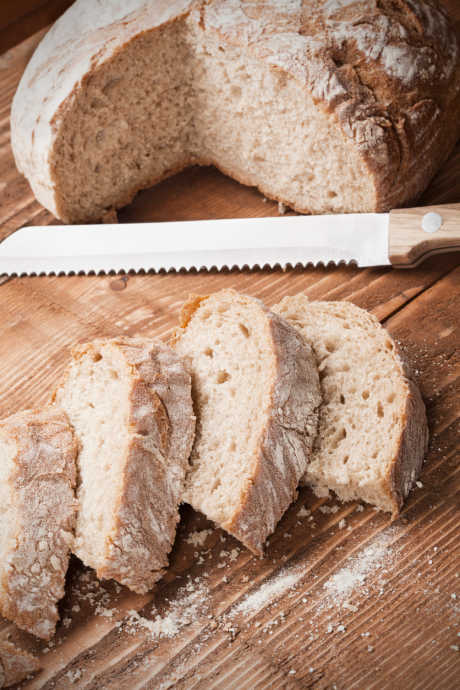Do You Need a Serrated Knife?
Posted by Amy on Jan 25th 2023
We will never insist you need a particular kitchen tool. However, we do want our readers to understand how various products are used. While it may seem like different pieces of cookware, bakeware, and kitchen tools are interchangeable, they are often designed to be especially good at certain tasks. For example, a saucier pan has curved sides and a wide opening to facilitate stirring and reducing sauces, which makes it a much better tool than a saucepan or a stockpot for that specific task.
In this post, we’ll focus on serrated knives: how they differ from straight edge knives, how serrated knives are used, why you might want to have one in your kitchen, and how to care for a serrated knife.
Serrated Knife vs. Straight Edge
Chances are, even if you don’t cook often, you have a favorite knife. It’s the one that feels right in your hand, and you use it for just about every task. For many of us, our go-to knife is a chef’s knife. For others, it might be a utility or prep knife. Chef’s knives and utility knives usually have a straight edge (or a fine edge).
But there are some tasks where a chef’s knife or utility knife isn’t the best tool. With even the sharpest straight edge knife, you will struggle to slice through a crispy crust without squashing the loaf of bread, or pierce the thick skin of a tomato without crushing the delicate fruit inside. These tasks are best accomplished with a serrated knife.

A serrated knife acts like a saw: the “teeth” catch the resistant outer layer of your food, while the moon shaped “gullets” glide through the softer inner layers for a clean slice. That’s why serrated knives are the superior tool when cutting food that has a tough exterior and delicate interior.
Want more examples of when to use a serrated knife? We love this post from The Kitchn, featuring five ways to use a serrated knife. You can also check out their follow-up post, with five more uses for serrated knives.
What to Look For When Buying a Serrated Knife
The two most popular types of serrated knives are bread knives and utility knives. As always, never spend more than you can afford on a knife. A great knife will last a lifetime, but you can still get many years of use from a more budget-friendly knife.
The blade of a bread knife typically measures seven to nine inches, which is long enough to cut through most artisan loaves. Bread knife blades are stiff to help you cut straight slices, and those with pointier teeth tend to perform better when cutting through crusty loaves.

The blade of a serrated utility knife usually measures four to six inches. A serrated utility knife is ideal for slicing tomatoes, peaches and plums, citrus fruits, and charcuterie meats. You can also use it for smaller baked goods like bagels.
Choosing a knife is a personal decision. You want your serrated knife to feel comfortable in your hand. We recommend visiting a kitchen store in person to try various knives before buying.
Serrated Knife Care
A serrated knife will hold its edge much longer than a straight edge knife because less of the blade comes in contact with the cutting board. However, even a serrated knife will eventually dull. To help keep all your knives sharp, we recommend hand washing them and promptly drying them with a soft towel before safely storing them.
When the edge of your serrated knife does grow dull, you’ll find yourself tearing through loaves and cakes rather than creating clean slices. When it’s time to sharpen your serrated knife, we recommend these tips from The Spruce.

